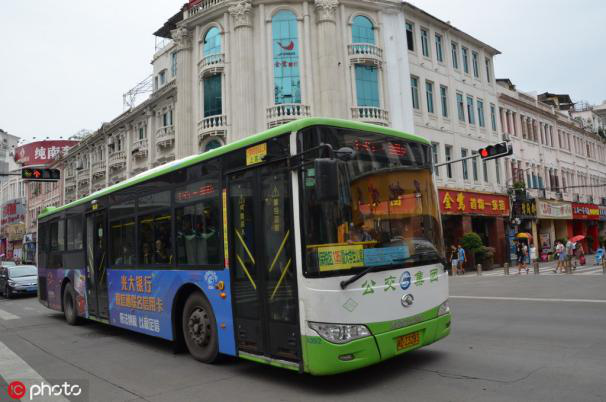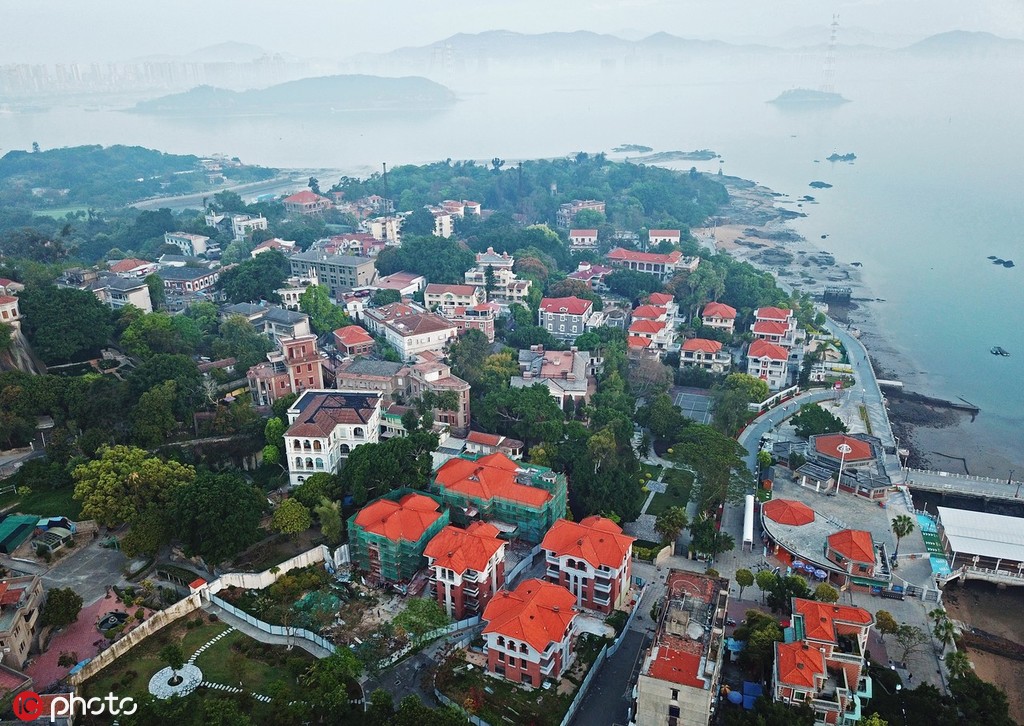144 hours in Xiamen: The ultimate guide (Day One)


Two tourists grin as they enjoy the 144-hour visa-free transit policy at Gaoqi International Airport in Xiamen, East China's Fujian province on Jan 1, 2019. [Photo by Huang Shaoyi/Asianewsphoto]
Transit passengers from 53 countries including the US, Canada, and all members of the EU can spend up to six days in Xiamen without a visa.
This visa-free policy allow foreigners from these 53 countries with visas and plane tickets to a third country to transit through Xiamen for a visa-free stay of up to 144 hours.
Xiamen is a city "by the sea, with the sea, and at the sea." It is full of beaches, sunshine, islands, hills, and many other delightful sights one may expect from an island.
The unique combination of Chinese and western elements, and the clash of cultures have made Xiamen an inclusive city. Xiamen is always waiting for visitors to explore and discover it. Read below for a suggested itinerary for a 6-day trip.
Arrival
By air: Situated at the northeast end of Xiamen Island, about 6 miles (10 kilometers) from the downtown area, Xiamen Gaoqi International Airport has two terminal buildings: T3 and T4. The airport boasts a convenient transportation network with express lines to and from the downtown area, Xiamen International Cruise Center, Wutong Wharf, Xiamen North Railway Station, Dongdu Port, and Wucun Bus Station.
The pick-up stations are located 80 meters to the west of Gate 7 in T3 and across from Gate 5 in T4. Taxi stands are located outside Gate 7 of T3 and Gate 3 of T4. It will cost about 35 yuan to reach the downtown area by taxi.
By sea: Xiamen Port was open to service in 1843, and is located in Xiamen and Zhangzhou cities in Fujian province. Wutong Wharf and Xiamen International Cruise Terminal are the only two valid entering and exiting ports. For more detailed information, click here.

The city bus network of Xiamen provides routes to and from most tourist attractions in Xiamen. [Photo/IC]
City traffic: Taking a taxi or renting a shared bicycle are also economical choices in Xiamen, as the city is small in size.
The Xiamen roundabout sightseeing bus is the fastest and relatively comfortable method to take in the sites of Xiamen.
The line starts from Jinyuan Building at Hubin South Road and travels around Xiamen Island in about one hour, passing by Island Ring Road with its beautiful landscape and many famous Xiamen tourist attractions such as Xiamen University, Huli Mountain Fortress, Island Ring Road, Zengcuo'an, International Conference and Exhibition Center, Guanyin Mountain Resort, and Wuyuan Bay.
Accommodation: The most recommended hotels in Xiamen
Day One: The treasured island

View of colonial buildings on the Gulangyu Island in Xiamen city, Southeast China's Fujian province. [Photo/IC]
With giant banyan trees shading its graceful European mansions, Gulangyu (鼓浪屿) looks like a Mediterranean island in the South China Sea.
The island is located just off the southwest coast of Xiamen. Its name Gulangyu, known in the local dialect as Kulangsu, also has musical roots, as Gulang means "drum waves," so-called because of the sound generated by the ocean waves hitting the reefs. Yu means "islet."
Covering an area of 1.87 square kilometers, Gulangyu includes a settlement composed of 931 historical buildings in a variety of local and international architectural styles, as well as natural wonders, historic roads, and gardens.
Gulangyu is an exceptional example of the cultural fusion that emerged from international exchanges, which remains visible in its urban fabric. The island has witnessed clashes of culture and integration between the East and the West since Xiamen was opened to foreign trade in 1844.
Buildings here have a mixture of different architectural styles including traditional Southern Fujian Style, Western Classical Revival Style, and Veranda Colonial Style. The once modernized international community had consulates, churches, and hospitals, and was dominated by Victorian-style architecture. Currently, many historical relics and representative natural scenic spots are still well-preserved.
Gulangyu is also known as China's "Piano Island" due to the inordinate number of pianos owned by local residents and their enthusiasm for music. Currently, there are more than 5,000 pianos owned by local families, the highest density of pianos per capita in the whole country. China's only piano museum was established on the island in the year 2000 and now has more than 100 boutique pianos on display.
Taking a stroll along the sandy stretches or cobbled alleyways, visitors will find the best of cafes, local seafood restaurants, local eateries, and street food galore. Staying on the islet overnight, one can choose from a range of experiences from top boutique hotels to small inns.
Location: Southwest corner of Xiamen Island
Transportation: Take a taxi or bus Nos. L5, 51, 59 to reach the ferry piers. It will cost from 35 to 50 yuan (about $6) for a round-trip ferry ticket. Click here for detailed information about the 24-hour ferry lines.
Entrance: The island is admission free but some polular sites on the island have admission charges from 10 to 100 yuan.
Note: Vehicles, except for electric golf cars, are forbidden. Wear comfortable shoes as exploring on foot is the best choice.
MOST POPULAR
- 1 China to give visa-free treatment to another 9 countries
- 2 China fully opens manufacturing sector to foreign investors in landmark opening up move
- 3 China's import expo attracts record-breaking participating countries, exhibitors
- 4 China's door opening even wider to foreign visitors, businesses
- 5 China revises rules to ease foreign strategic investment in listed firms
Editors' Picks
 Video:
Peru sees new port open
Video:
Peru sees new port open
 Infographic:
China's public holidays for 2025
Infographic:
China's public holidays for 2025
 Infographic:
Basic facts of APEC
Infographic:
Basic facts of APEC
 Infographic:
Wrapping up the 7th CIIE: Data recap
Infographic:
Wrapping up the 7th CIIE: Data recap



